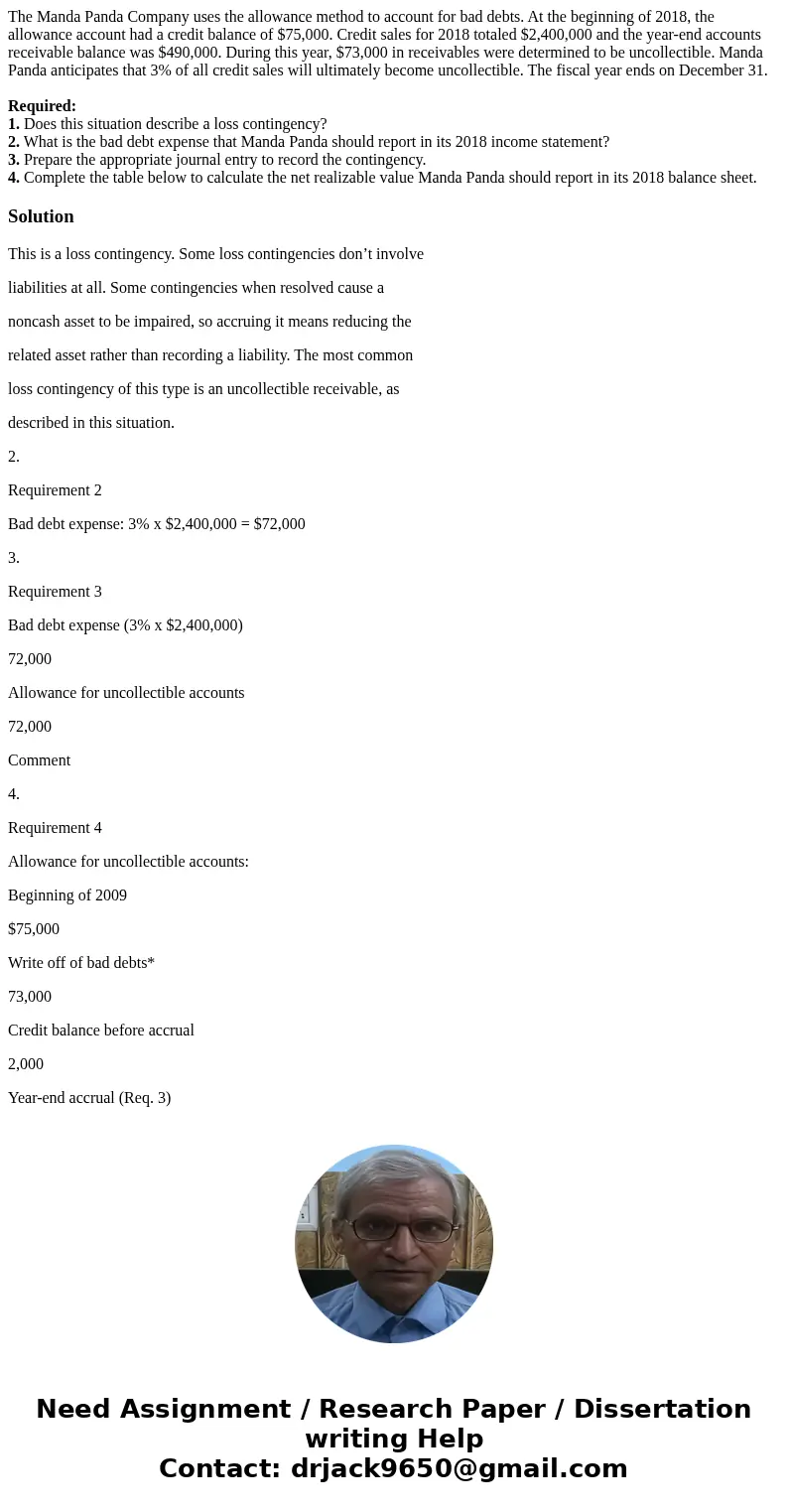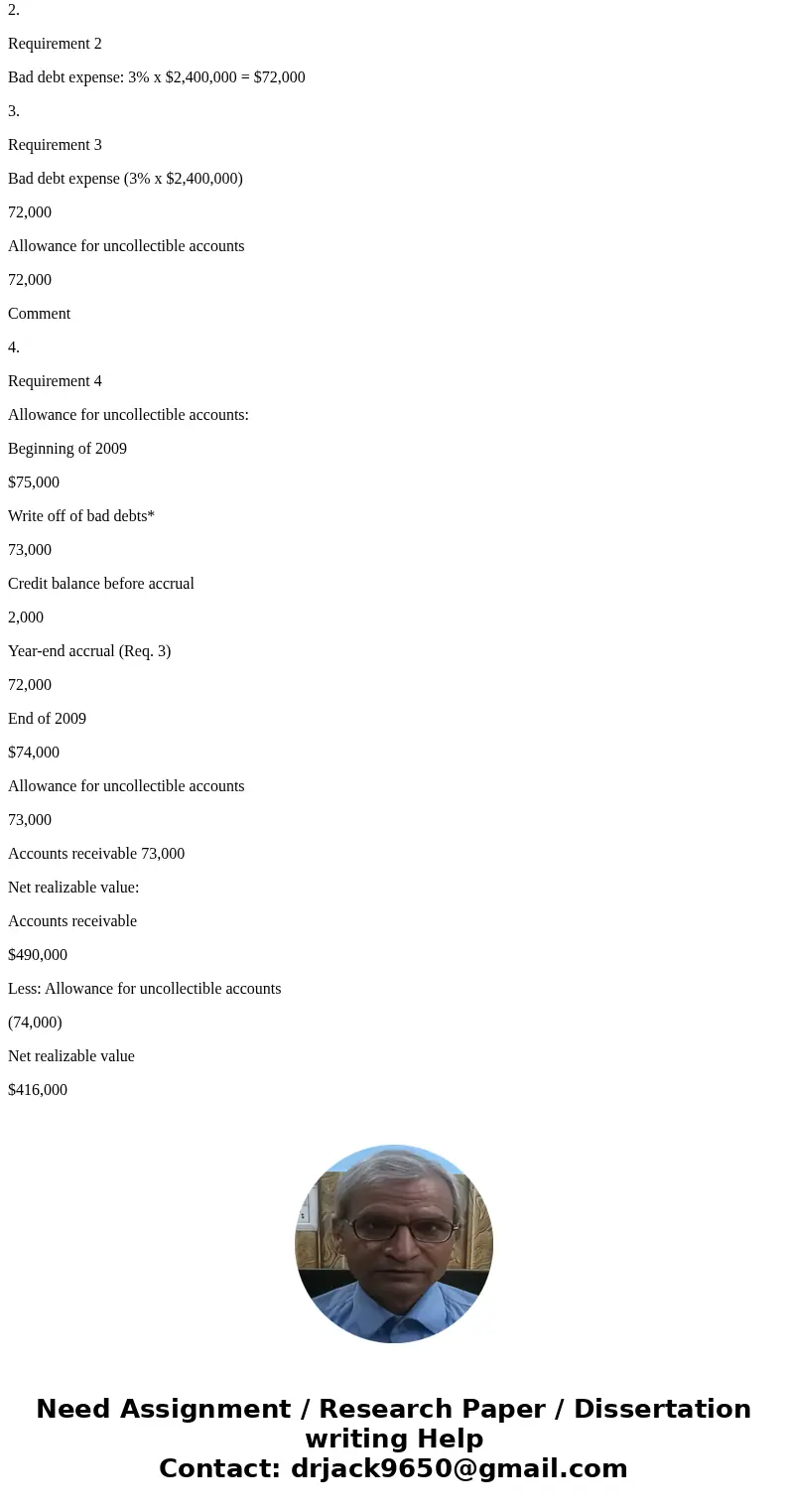The Manda Panda Company uses the allowance method to account
The Manda Panda Company uses the allowance method to account for bad debts. At the beginning of 2018, the allowance account had a credit balance of $75,000. Credit sales for 2018 totaled $2,400,000 and the year-end accounts receivable balance was $490,000. During this year, $73,000 in receivables were determined to be uncollectible. Manda Panda anticipates that 3% of all credit sales will ultimately become uncollectible. The fiscal year ends on December 31.
Required:
1. Does this situation describe a loss contingency?
2. What is the bad debt expense that Manda Panda should report in its 2018 income statement?
3. Prepare the appropriate journal entry to record the contingency.
4. Complete the table below to calculate the net realizable value Manda Panda should report in its 2018 balance sheet.
Solution
This is a loss contingency. Some loss contingencies don’t involve
liabilities at all. Some contingencies when resolved cause a
noncash asset to be impaired, so accruing it means reducing the
related asset rather than recording a liability. The most common
loss contingency of this type is an uncollectible receivable, as
described in this situation.
2.
Requirement 2
Bad debt expense: 3% x $2,400,000 = $72,000
3.
Requirement 3
Bad debt expense (3% x $2,400,000)
72,000
Allowance for uncollectible accounts
72,000
Comment
4.
Requirement 4
Allowance for uncollectible accounts:
Beginning of 2009
$75,000
Write off of bad debts*
73,000
Credit balance before accrual
2,000
Year-end accrual (Req. 3)
72,000
End of 2009
$74,000
Allowance for uncollectible accounts
73,000
Accounts receivable 73,000
Net realizable value:
Accounts receivable
$490,000
Less: Allowance for uncollectible accounts
(74,000)
Net realizable value
$416,000


 Homework Sourse
Homework Sourse